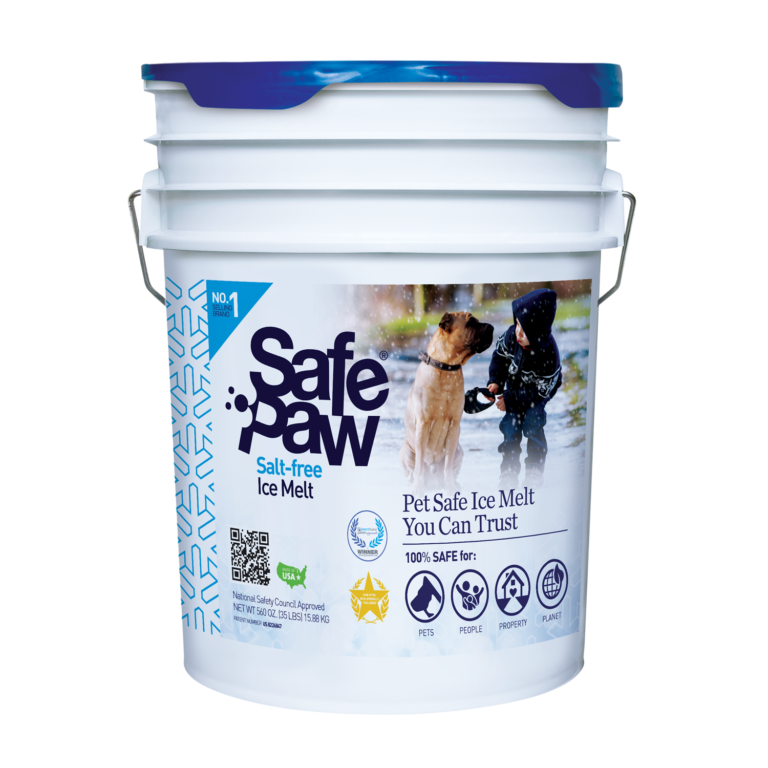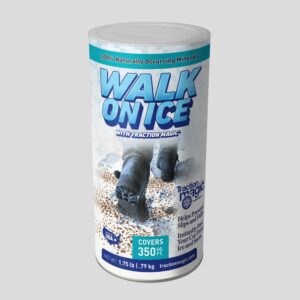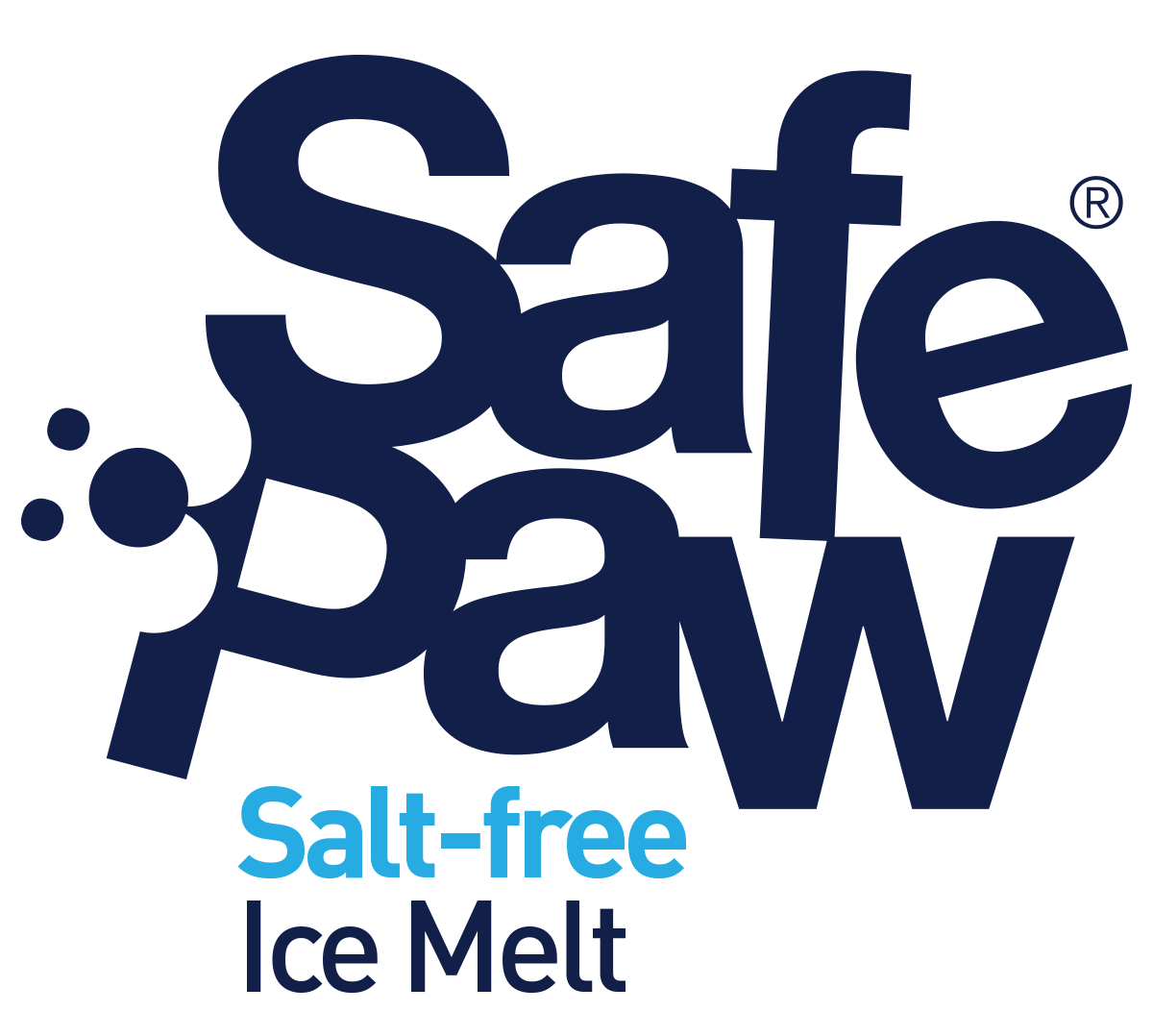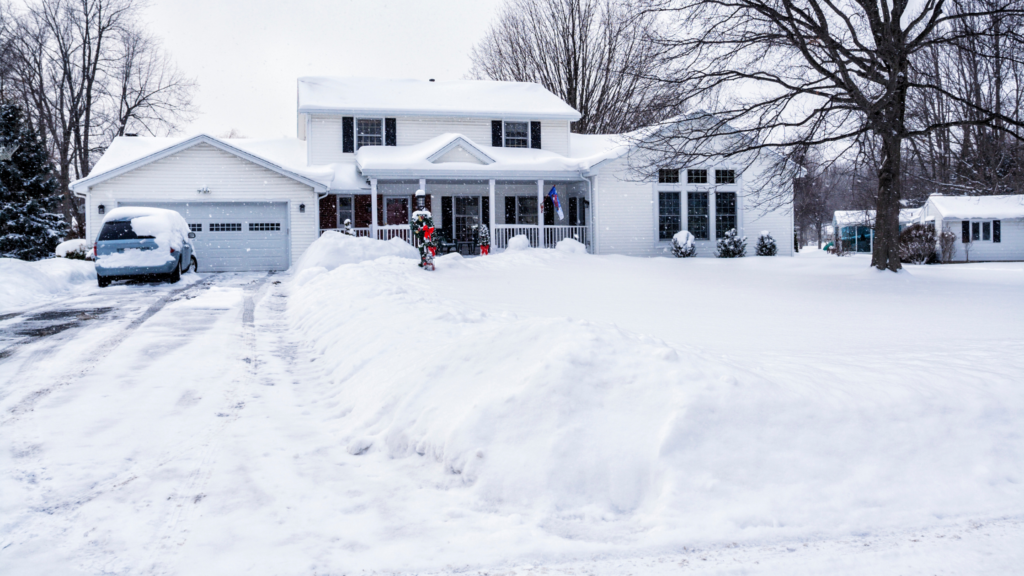
Table of Contents
Understand the Science of De-Icing: Exothermic vs. Endothermic Reactions
De-icers work by disrupting the ice formation process, but not all de-icers function the same way. Some rely on exothermic reactions, which release heat to help melt the ice, while others use endothermic reactions, which absorb heat to lower the freezing point of water.
For example:
- Rock salt (sodium chloride) relies on an exothermic reaction but is ineffective below -9°C (15°F).
- Calcium chloride produces significant heat but can be corrosive to surfaces.
- Safe Paw, a salt-free option, breaks the bond between ice and surfaces without relying on harsh chemicals, making it effective even at -19°C (-2°F).
Understanding the science can help you choose the most effective and environmentally friendly option for your needs.
Get ready for winter with Safe Paw: The Pet-Friendly Ice Melter that cares – for your home, pets, and planet.
Pre-Treatment Is Key: Anti-Icing Before the Storm
Applying a de-icer before a snowstorm, known as anti-icing, is one of the most effective ways to prevent ice from forming. Liquid de-icers are particularly effective for this purpose. They create a barrier that stops snow and ice from bonding to surfaces, making plowing or shoveling easier.
By using Safe Paw or a similar product as a pre-treatment, you reduce the need for heavy deicing later, saving time, money, and effort. Pre-treatment is especially critical for areas prone to heavy snowfall or where ice builds up quickly.

Safe Paw
It is a pet-friendly, eco-friendly ice melt that is safe for your family, pets, and property. It is made with a unique formula that is gentle on paws and concrete, and it melts ice and snow quickly and effectively.
Safe Paw is the perfect choice for winter weather!
Always Clear Snow Before Deicing
Before applying a de-icer, remove as much snow as possible using a shovel or plow. De-icers are designed to melt thin layers of ice, not large accumulations of snow. Clearing snow first allows the product to work efficiently and reduces the amount needed. Using a de-icer improperly or excessively can lead to over-application, which may harm your driveway, vegetation, and the surrounding environment.
Protect Your Driveway and Property
Traditional deicing salt can corrode concrete, metal, and asphalt, causing long-term damage to your property. Over time, the freeze-thaw cycle worsens the effects, leading to cracks and scaling. Safe Paw, a de-icer specifically designed to be non-corrosive, protects your driveway and walkways while providing excellent ice-melting capabilities. Its salt-free formula ensures your property stays intact even during Canada’s harsh freeze-thaw cycles.
Get ready for winter with Safe Paw: The Pet-Friendly Ice Melter that cares – for your home, pets, and planet.
Choose Environmentally Safe and Pet-Friendly Options
Traditional deicing products, especially those containing chlorides, can harm soil, vegetation, and waterways through runoff. They also pose risks to pets and children. Safe Paw is a 100% salt-free, pet-safe, and eco-friendly de-icer. Its unique formula ensures no harm to pets, plants, or the environment while providing a reliable and long-lasting solution.
Additionally, Safe Paw has an excellent spread rate, allowing you to cover more ground with less product, making it cost-effective. Its long shelf life ensures you’re prepared for multiple winters.
Why Does Salt Melt Ice Faster — And What Temperatures Matter?
You already know salt lowers the freezing point of water, which is why it’s so often used to tackle ice. But there are specific details worth understanding about what degrees does snow melt with different de-icers — because that affects safety, effectiveness, and how much product you’ll need.
For example, ordinary sodium chloride (rock salt) starts becoming much less useful below about -7°C to -9°C. At those lower temps, its ability to melt ice drops significantly. Meanwhile, other de-icers (like certain calcium or magnesium chloride blends) remain effective in colder conditions. So when picking a de-icer, think about how cold your region regularly gets. If you’re often dealing with temperatures well below freezing, a product that works only in “warmer cold” may leave you stuck.
Also, temperature isn’t everything — moisture, wind, and sun all influence how well the de-icer can work. On a bright, sunny morning with some moisture still in the air, even a milder de-icer may work better because the sun helps warm the surface. In deep freeze and shade, you’re going to need something more aggressive or pre-treatment to avoid thick ice buildup.
Windshield De Icer: Special Care Needed for Vehicles
Windshield de-icers come with their own rules. Unlike de-icers for sidewalks or driveways, windshields need gentler formulas. Aggressive chemicals can damage the glass, the rubber seals around it, or the coatings some vehicles have.
If you use a windshield de-icer, make sure:
- The product is explicitly labelled safe for automotive use.
- It doesn’t rely heavily on harsh salts or extreme chemical mixes that might leave residue.
- You apply it as directed — often by spraying, waiting a short time for ice to loosen, then scraping gently. Even the best de-icer won’t help if ice has bonded tightly and you force it or scratch with a metal blade.
Also, keeping a scraper with a wide solid blade, using your car’s defroster before spraying, and not letting residue build up (wiping clean when ice is gone) all help maintain visibility and reduce wear. Safe Paw can be safely spread on the ground around your car to keep the areas you walk on ice-free without worrying about corrosion or pet paw irritation. Its salt-free, non-toxic formula won’t damage concrete or asphalt, making it ideal for driveways and parking spots. By treating the paths around your vehicle, you ensure safer footing while protecting both your property and your pets.
Dog Friendly Salt for Ice: What It Really Means
If you see “dog friendly salt for ice” on a bag, you’re rightly thinking about paws, noses, and potential ingestion. But “dog friendly” doesn’t always mean “safe in all conditions.” What those labels often imply is reduced irritation, maybe buffered chemical blends, or lower concentrations. Still, many “dog friendly” de-icers contain chloride compounds that can dry or crack paw pads, or cause discomfort if your pet licks paws after walking on treated surfaces.
To protect pets:
- Choose de-icers with minimal salt or non-chloride-based formulas when possible.
- Rinse or wipe paws after walks to remove any residual chemicals.
- Use less de-icer in areas your pet frequents, and perhaps use more pet-safe traction materials (gravel, sand) near entrances.
Even small amounts of harsh salt over time can add up. If safe use is your priority, you’ll want formulas that avoid the more damaging ingredients entirely.
Applying All This: Smarter De-icer Use Strategies
Putting these pieces together means adopting smarter practices beyond just buying a product. Here are tactics to get better results with less collateral damage:
- Pre-treat surfaces before ice forms. Doing so at or just before freezing temperatures helps reduce bonding.
- Measure temperature and conditions carefully. Don’t assume that “winter mode” starts at 0°C. De-icer types vary — one formula might need -5°C, another might work down to -20°C.
- Use smaller amounts when possible, especially in pet zones or near your vehicle. More isn’t always better. Over-application creates residue and wastes material.
- Blend strategies: Use a windshield de-icer for visibility, safe walk-on surfaces for shoes, and possibly outdoor systems for larger surfaces. This way you match the tool to the task.
Get ready for winter with Safe Paw: The Pet-Friendly Ice Melter that cares – for your home, pets, and planet.
Conclusion
Now that you know why salt melts ice faster, what temperatures matter, what to look for in a windshield de icer, and how “dog friendly salt for ice” should really be read, you can make smarter winter decisions. The trick isn’t just picking something that melts ice, but picking something that works well under your local conditions, protects pets, maintains vehicle surfaces, and reduces environmental impact. Use pre-treatment where possible, measure temperature, pick gentler formulas, and apply wisely. That way, you stay safe, your property lasts longer, and winter becomes a little more manageable.
Try Our Other Winter Safety Products

Safe Thaw
Safe Thaw was created as the ice management solution for tough winter environments. Ideal in commercial and industrial properties, shops, government agencies, bridges, construction. It’s 100% Salt-Free and Chloride-Free.

Walk On Ice
The slip and fall prevention solution, for any icy or snowy surface, on a handy portable package! Lightly spread around your walkway, driveway, vehicle, tires, and pathways. Turn ANY icy surface instantly, into a non-skid, slip-free surface.


